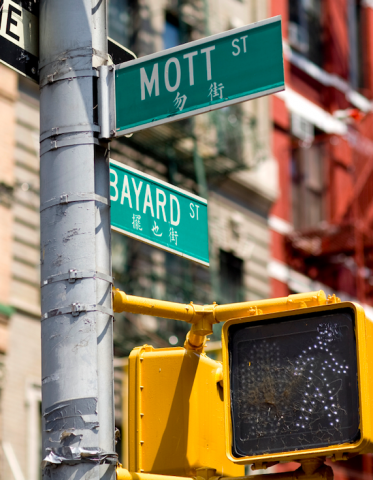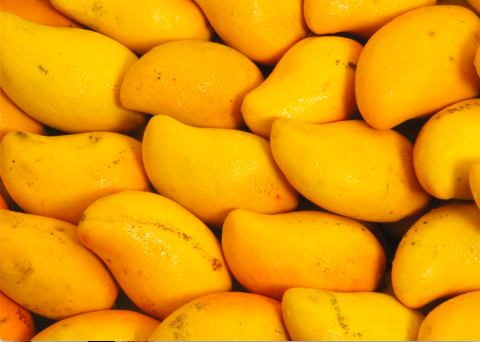Four Immigrant Stories from the Heart of New York
 HRN’s home has always been Brooklyn and when we think about New York, we think about the diverse cultures, histories, and people that make this city what it is. By sharing the taste of home with their new neighbors, generations of immigrants have contributed to New York’s multicultural food landscape. Many of New York’s neighborhoods remain rich enclaves with strong ties to food cultures from around the world. The Bronx has Arthur Avenue’s Little Italy, while Queens’s Jackson Heights neighborhood is home to Little India, Little Colombia, and Little Tibet. In Brooklyn, enjoy Perogies from Greenpoint’s Little Poland or chow down on kimchi in Manhattan’s K-Town.
HRN’s home has always been Brooklyn and when we think about New York, we think about the diverse cultures, histories, and people that make this city what it is. By sharing the taste of home with their new neighbors, generations of immigrants have contributed to New York’s multicultural food landscape. Many of New York’s neighborhoods remain rich enclaves with strong ties to food cultures from around the world. The Bronx has Arthur Avenue’s Little Italy, while Queens’s Jackson Heights neighborhood is home to Little India, Little Colombia, and Little Tibet. In Brooklyn, enjoy Perogies from Greenpoint’s Little Poland or chow down on kimchi in Manhattan’s K-Town.
But immigrants’ contributions to the city’s foodways are not limited to designated areas. Immigrants make kitchens of all kinds run across the five boroughs. They are deeply embedded in the fabric of our city’s food. On an episode of Meat and Three, four stories pay homage to the immigrants shaping how New Yorkers eat, exploring history and personal stories as well as taking a hard look at the access issues that affect some of our city’s newest residents.
How a community of immigrants from the Arabic-speaking world left their mark.
Reporter Vaidehi Kudhyadi looked back to the end of the 19th century when New York City became home to migrants from the Arab world. Families and individuals came to the Big Apple in search of a new life and settled in Lower Manhattan and Brooklyn. While migrants from Lebanon, Syria, Palestine, and Iraq started their lives in America by importing goods and street peddling, they were also known for their food. 
The Arab migrant community enriched the cultural fabric of the island from the moment of their arrival. From importing rare foods like pistachios to American markets to opening restaurants specializing in Turkish coffee and pastries, the community introduced Americans to diverse tastes. But they also had other motives. Dr. Matthew J. Stiffler, a scholar of Arab-American history and food in New York City, says that it was one way these immigrants were “able to present a positive face of who they were because, at this time, the United States was not a friendly place for immigrants in general.” He added that “these restaurants were very adept at bringing in the public through their advertising and the way they decorated the restaurants.”
While survival and acceptance may have been driving forces for these migrants, there is no denying that they had an impact on the way that New Yorkers eat even today. They introduced the city to foods like hummus, which was still viewed as exotic by the mainstream in the ‘80s and ‘90s. Even though some Arab-American enclaves like Little Syria in Lower Manhattan don’t exist anymore, we can still find traces of their food legacies all around New York and America.
Neighborhoods like Little Italy and Chinatown loom large in the New York foodscape, but, where do smaller immigrant communities go to find a taste of home?
In the next segment, Bianca Garcia looked at how Jollibee spotlights Filipino values and brings a taste of nostalgia to a people raised on “chicken joy.” As a Filipina living in the US, she admits it’s not always easy to find food that reminds her of her childhood. She knew she wanted to talk about Jollibee as soon as this episode was pitched. For those who are unfamiliar, it’s a Filipino fast food joint famous for its bucket of fried chicken, called “chicken joy,” their “jolly spaghetti,” which has a sweet sauce loaded with sliced hot dogs, and a warm, flakey peach mango handheld pie for dessert.
New York is supposed to be the place where you can find every kind of food, right? That’s how she found herself walking past the New York Times office along 8th Avenue, where across the busy street, she spotted the smiling mascot of Jollibee. When she left with her red bucket of takeout, she noticed that passersby kept making eye contact, which was strange. And they kept smiling at her, which was even weirder. Eventually, a brave stranger sitting nearby leaned over to say, “I can’t believe you guys like Jollibee, I grew up on that. Where did you get that?” People on the street followed suit and waited to ask Bianca where she got her takeout. They were so excited. Most of them were Filipinos, but some were just curious about the hype surrounding this group. It seems Jollibee is already capturing the minds– and appetites– of New Yorkers.
In 1960, there were just over 8,000 Mexican immigrants in the United States. According to the 2020 U.S. Census, that number has jumped to over 300,000, including second-generation Mexicans.

For the past 40 years, this influx of Mexican immigration has been responsible for the pervasiveness of the Mexican food we have all come to know and love across the nation. Elba-Tamara Rodriguez did some on-the-ground reporting from The Bronx. She wanted to hear from some folks in her native borough of the Bronx about why they started taco trucks. First, she met Giovanni Salazar on Broadway near 238th Street. He explained that he came to the US for a better future, for his family, and because in Mexico there are hardly any jobs. Where he’s from, the state of Guerrero, there’s not a lot of work. Giovanni started with a food cart on 231st Street and Broadway. After experiencing success with the cart, he decided to venture into the food truck business.
Giovani works the food cart 50 hours a week and as his day comes to an end around 6:30 p.m., the taco truck is pulling into its spot. The truck is operated by Giovanni’s brother-in-law and other family members, but primarily, his 17-year-old daughter, Xitlalic Astudillo. She is second-generation Mexican, born in Queens. She calls herself the cashier, but she is also the face of the business. She shared: “This is a way to say thank you for raising me with my mom. So I pretty much feel like I got to help him out. From love, but also, I feel it also helps me build some responsibility and independence with myself, so I thought, [it] is important to do this with my dad.”
Immigrants contribute so much to New York’s food culture, but it’s also no secret that they keep the food system running. So who’s supporting them?

Sara Mathes investigates one organization’s grassroots efforts to address the issue of food insecurity in the LatinX immigrant community in Sunset Park, Brooklyn. Mixteca’s Mercadito Solidario, or “Solidarity Market,” is about more than just providing food. It’s not giving out the canned and boxed shelf-stable items that food pantries so frequently rely upon. Even when Sara visited during New York City’s heat wave in July, their produce was beautiful. Under a shady tent, volunteers stood ready to give out Latin-American kitchen staples to a long line of people, some of them residents of the local shelter, others just people who heard about the Mercadito through social media, local news, or word of mouth. Tomatillos, jalapeños, onions, tomatoes, eggs, cilantro, dragon fruit, bananas, watermelons, and mangos. The produce is mostly purchased from farmer's markets in upstate New York and New Jersey. Lorena Kourousias, Mixteca’s executive director, emphasizes that “those mangos are the best mangos you can get in New York City. And we do that because it's really important for us to make a statement that this is food justice and our families, our communities deserve good quality food and not just something that somebody else doesn't want.”
Mixteca was founded in 2000 by Dr. Gabriel Rincón, a Mexican immigrant himself, to address the lack of Spanish-language information about HIV and AIDS. Since then, Mixteca has broadened its mission, tackling a variety of barriers to the advancement of LatinX immigrants by providing education, physical and mental health services, and legal support. The Mercadito Solidario was born of the pandemic when they realized that the community was struggling to get food on the table. Undocumented immigrants cannot apply for unemployment. They are also not eligible for SNAP benefits. Even the Excluded Workers Fund, a 2 billion dollar expenditure by New York State to try to cover undocumented essential workers, was not enough. Lorena shares, “We just realized our community is excluded from the Excluded Workers Fund because they need an I.D., they need a proof of work, they need employment. They need a lot of things that they don't have.” Mixteca was also forced to forge its own way: “We apply for funding for food and we didn't get it. So all you see here is with no support from the government,” says Lorena.
What you eat and drink matters greatly - and of course, so do the people who make it. Our supporter 818 Tequila agrees. 818 brings you tequila from family-owned farms in Jalisco, using only the highest quality ingredients. 818 Tequila is hand-picked by jimadores; cooked in traditional brick ovens; aged in oak barrels; and brought to you and your family straight from theirs. 818 values every step of our process and respects those who make it possible, all while fulfilling their commitment to the earth. Thank you to 818 Tequila for supporting this episode and article.
Listen to the full stories shared here on Episode 162 of Meat and Three. Plus, find more information and resources in the episode’s show notes.










